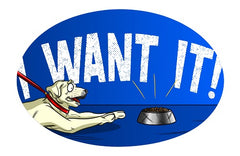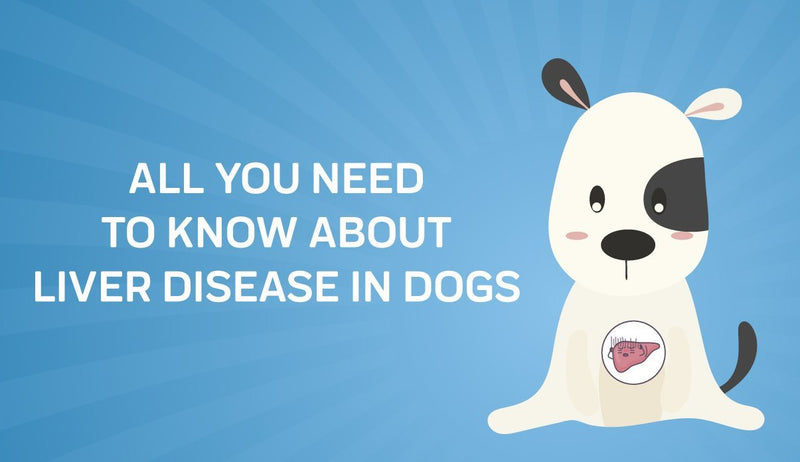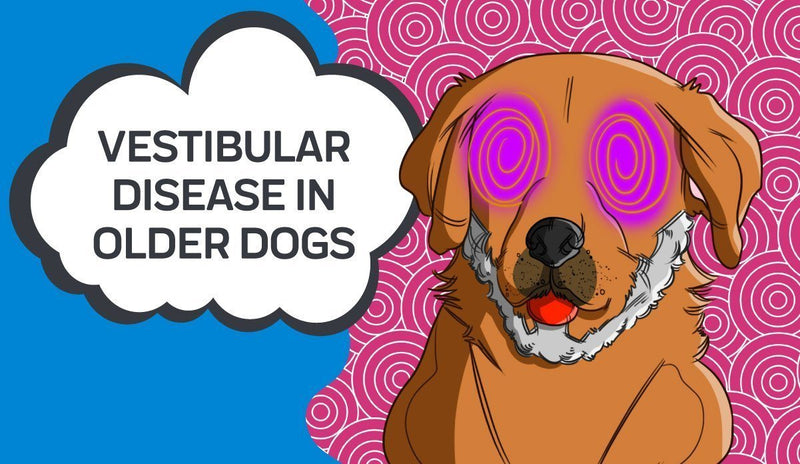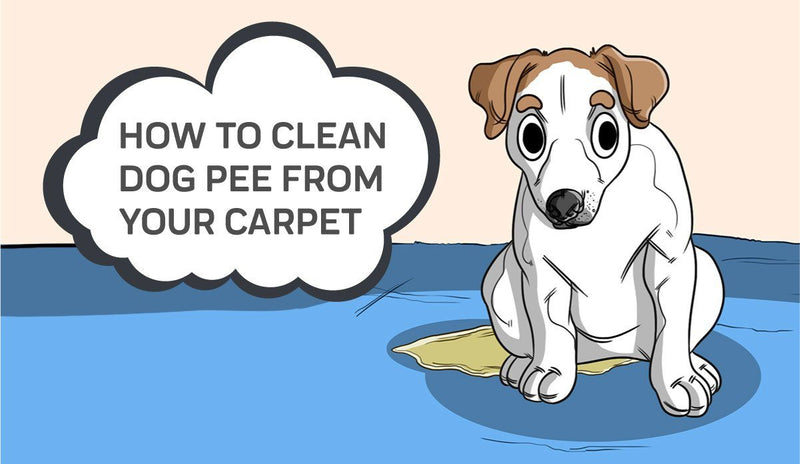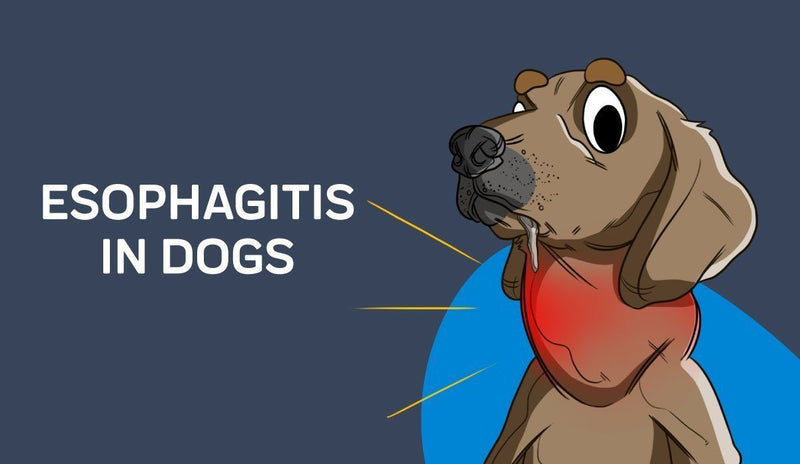
When should a dog switch from puppy to dog food? From the point that a cute puppy comes into the world, he has one goal: to eat. The majority of folks know that keeping a puppy on his mom’s milk is the best option for growing up healthy, yet what happens after this? Knowing when to switch from pup food to dog food is not always an intuitive choice – and a devoted, loving pet owner does not want to get it wrong. What is the best method of telling that a puppy is prepared to begin chowing down with the big boys and leave the puppy chow behind? This when to switch puppy to dog food article from Innovet Pet Products will go over some commonly-asked inquiries that might be useful for first-time doggy parents.
When Should Puppies Switch To Dog Food: Like Human Children, It All Depends
Before getting started on when to switch from puppy food, it is vital to note that there are many differences between adult dog food versus puppy food. While do owners generally can expect to make the switch in their puppy’s food bowl at around one year to 1-1/2 year’s old, his breed will heavily factor into it. For small to medium dog breeds (defined as an expectation that he will weigh less than 50 lbs. fully grown), the target is going to be closer to the one-year mark. If he is a larger breed or has a bigger breed in his genetics, he likely will stay in his puppyhood a bit longer, as all this growing requires additional food energy for a longer time period. Specific breeds also may have other considerations, like nutrients required to keep their furry coat shiny, or in some instances, a puppy might need special allergen-free food – therefore, make certain that you speak with a trusted veterinarian to determine which food brand has the proper dog nutritional needs that are going to work better for him.
So, when to switch off puppy food? Even if a growing, healthy pup looks like he can deal with the crunch, taste, or size of adult doggy food, it does not necessarily mean it is a good option for him. Consider toddlers of humans and their intrigue with the foods mommy or daddy eat: they will be interested in tasting them, yet these foods will not have the nutrient-dense composition needed to grow strong; in other instances, their digestive system might not be ready for them. Likewise, this logic additionally applies to young dog companions: even though he will probably want anything that smells remotely attractive to his sensitive nose, it also means his dog owners will have to stand firm and choose to be the voice of reason – even if he is an especially convincing beggar. Before we go on with the topic of when to start feeding adult dog food, let us discuss how to boost your dog’s diet.
Ways to Boost Your Pet’s Diet
Below are some useful rules to follow when shopping for your dog’s food. As always, if you’re still uncertain of what fits better for your dog, talk to your vet for suggestions.
Ignore all of the hype
All of us have seen it: leading canine food companies are all over the television labeling themselves as the “most nutritious” dog food product that is the best selection for all dogs. Unfortunately, some of the most major companies are far from healthy, just portraying this phony facade that deceives you. Do not fall into those traps simply because you have seen an ad. The best method of avoiding this includes reading the label and check which kinds of ingredients are inside the food product. Is there a suggested amount of minerals, vitamins, fats, proteins, and carbs? Are there ingredients you do not recognize? Those are the primary elements you ought to be watching out for while checking a dog’s food label. As with regular food labels, doggy foods are going to list the ingredients from biggest amount to the smallest amount going from the top to the bottom.
Switch It Up Using Fresh Ingredients
In order to add a bit of versatility to the dog’s diet, try to cook them a fresh meal yourself. Specific fruits and vegetables may be provided to your pup for additional nutrients. Cooked pork, salmon, tuna or additional proteins may be extremely nutritious for your dog. It’s also possible to add some additional nutrients and flavor by boiling some carrots or potatoes. For carbohydrates, it’s possible to feed them cooked white rice or an additional kind of grain. Before you feed the dog human food, be certain to check that it’s safe with the vet. While some natural food may be extremely beneficial to your pet, there also are numerous others that ought to be avoided.
Stick with The Suggested Amount
Wondering why your pet has put on a couple of extra pounds? It might be because she’s consuming more than she should. Even though it might be difficult to turn down those large puppy eyes when your puppy is searching for his afternoon snack, try and refrain. Even if you’re feeding her the healthiest food, she still can develop obesity if she’s being fed too much. To discover how much your unique dog needs, speak with the vet for more suggestions. The vet will factor in your pet’s age, weight, and level of activity before you come up with his advised amount.
When to Transition to Adult Dog Food
Now that we’ve tackled the subject of how to boost your pet’s diet, let’s get back to the topic of when to switch to adult dog food. Once a dog has grown into himself a little, his owners might be watching the calendar and attempting to figure out if it is finally time to pick up some adult dog food. While there is a temptation to change overall at one time to reinforce the new food, this may be a troublesome time for his tummy. It is vital to ease him into the new dog food to prevent diarrhea (more on this below) or vomiting, or possible sluggishness from nutritional changes.
Below, some switch puppy useful ideas:
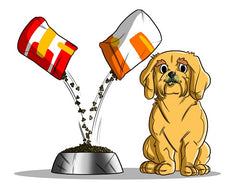
- Use a tiny handful of the new dog food over a couple of days as “training treats” to introduce and acclimate him
- At first, do not fully replace his food – use a 50/50 mix of old and new and slowly raise the proportion of new dog food every day
- Do not immediately switch his food if there are additional stressors present – a long car ride, a move, etc. Anxiety falsely can make it seem as if the food is causing problems
- Note all changes in behavior and his energy levels – if he does not appear to be acting like himself after one week on the new dog food, ask the vet for help
- Feed him during the same point each day and be certain enough fresh water is available. Consistency assists with digestion, and it additionally makes it simple to know when he will have to go potty
Generally, owners must observe his new diet from both ends to ensure that he is receiving a balanced, healthy diet. If he is not acting like his usual self or does not appear as interested in walks or playing like he normally is, it might be an indication to put off the food switch a bit longer.
Take It Slow
The adult dog food switch is an exciting time for both puppies and their owners; however, be certain not to open up the edible floodgates just yet. Similar to the way his body has to change and grow, his tummy is in the midst of a fragile process, getting accustomed to various nutrients and various levels of calories, as well.
While dog owners might be tempted to begin to slip their puppies bites of human food during the process of bonding, take it easy on the supplemental treats. His tummy must learn its “new normal”, and it is difficult to do this with a consistent stream of indulgent bites in addition to his new kind of food.
Consider the Pet Family
In the instance of multi-pet homes, owners also will have to keep a watchful eye on feeding behaviors among dogs. For pet parents who are prepared to share food between growing pups and adult dogs, there may be some fights at the “dinner table.” So, it is vital to run interference, or feed dog(s) separately to ensure that everyone is consuming their fill.
In the instance that a pup is less than enthusiastic about his new pet food, dog owners might need to patiently reinforce that it’s what dinner appears like now, and he must eat up when it is in his bowl – an additional feeding-conundrum which might be all too familiar to dog owners who’ve had to use the same type of training methods with their kids at the dinner table. Even though a young puppy might resist at first, he will thank you when he appreciates his newfound adult doggy stamina, appetite, and strength, courtesy of his well-timed adult food routine.
Diarrhea in Dogs: What Causes It?
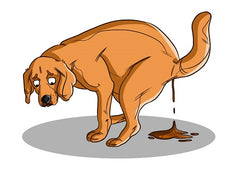
One great thing about America is a diversity of opinion. Humans argue about movies, politics, food, music, and pretty much everything and anything under the sun. There are few things that all Americans agree on. As a matter of fact, some folks do not even enjoy pizza! There’s at least something, though, that you will be hard-pressed to discover someone in favor of: diarrhea.
Nobody enjoys having diarrhea, and nobody likes when their pets have diarrhea. Apart from the obvious cons, such as vomit-inducing odors, diarrhea is an ailment, and one which may be harmful to your pet’s health – and in some instances, his life. However, though it may be harmful, diarrhea is common for your pet.
It’s common because it impacts one of the most constantly functioning and important parts of a canine’s body – his digestive system. It also is common because it has several causes. Determining why a dog has diarrhea may be challenging, as the digestive system is an extremely complex and sensitive process.
Diarrhea: What is it?
Put plainly, diarrhea is frequent, watery, and loose bowel movements. Everyone – and every canine – gets it, and everyone knows the pain related to it. In most instances, diarrhea lasts a couple of days. If diarrhea lasts longer, something might be wrong. Technically, diarrhea exists when a canine has more than three liquid or loose bowel movements in one day.
The most typical cause is an intestinal infection due to parasites, bacteria, or virus – it’s also referred to as gastroenteritis, a catch-all word for problems with the bowels and digestive system. Bowel infections may be acquired from contaminated water or food, or right from another canine who’s infected. Since canines are scavengers, they’re highly likely to obtain a virus from contaminated animal carcasses or food that produced diarrhea.
There are 3 loose diarrhea in dog categories: short duration bloody diarrhea, short duration watery diarrhea, and chronic/persistent diarrhea which lasts for 2+ weeks. Generally, the short duration watery diarrhea is the consequence of an infection or virus. If blood exists in stools, there’s probably an additional problem (dysentery, internal bleeding, etc.).
Chronic diarrhea may be caused by numerous issues, which includes non-infectious problems such as irritable bowel syndrome, inflammatory bowel disease, or lactose intolerance. Anxiety and stress in dogs may also play a role. Although humans and dogs both get diarrhea – and oftentimes for the same reasons – our digestive systems function a little differently.
How Do Dog’s Digestive Systems Work?
Dogs process and ingest foods in a different way than human beings do. It begins with the mouth. People chew food gradually, and the saliva inside the mouth assist in breaking down food before it gets to the esophagus.
A canine’s mouth is made to chew and bite large chunks and quickly swallow them. It’s a product of nature. Within the wild, there isn’t any time to sit down for a proper meal with the canine family – it is about survival. That is why the majority of dogs tend to inhale their food when you place it down for them. Their brains are actually wired to get what they’re able to get, when they’re able to get it. There isn’t any grocery store in the wild.
In turn, canines have large teeth and hinged jaws to help them tear meat off and chew through bone and fat. A dog’s saliva doesn’t have time to aid in breaking food down before they swallow it, making their tummy more critical to breaking food down. After food passes through the dog’s esophagus and gets to his stomach, it’s processed by high hydrochloric acid levels, which permits for the breakdown of the big pieces of bone and protein dogs usually ingest.
Food that can’t be broken down by tummy acid is rejected with the canine’s natural regurgitation instinct. After food is processed in the tummy, it then passes over to the small intestine in liquid form, in which the food is fully digested, and it’s converted to nutrients which fuel the canine’s body. Any food which hasn’t been thoroughly digested inside the small intestine moves through to the large intestine, in which it’s turned to waste then passed through his rectum as feces.
Like additional mammals, the dog’s digestive process takes around 8 to 10 hours. Dogs also may suffer flatulence and gas, but it isn’t as common as it is in people, and might be a sign that something within their diet doesn’t agree with them.
When to Switch Dog to Senior Food?
So, when to switch to senior dog food? The third life phase to be mindful of is the senior life phase. Senior pets oftentimes have medical problems that might benefit from changes in diet. For instance, a vet might suggest a pet food containing glucosamine and/or fatty acids like EPA and DHA for seniors who have issues with mobility. According to doctors, feeding the suitable dog food also can occasionally be an efficient way to manage diseases such as heart disease and chronic kidney disease. The AAFCO doesn’t have a senior life phase; therefore, search for a dog food that has an adult maintenance statement for the senior dog.
Conclusion
If you need to provide your pet the best life you can, set them up for success by giving them a nutritious and wholesome diet. With so many products in the market, it may be difficult to tell the good from the bad. In order to make the process easier, look at the labels for minerals, vitamins, fats, carbs, and protein. Those components ought to be within the established aforementioned percentages. If the product has unnatural or even dangerous ingredients, choose a different product.
At the end of a day, the best resource for discovering the proper dog food is going to be your vet. The vet exists to guide you about all questions concerning your pet’s general health, so be certain that you ask them anytime you’re not sure. So long as you give your pet daily walks, nutritious food, and ample attention, he’ll have the ability to live healthily and happily.
Sources:
Puppy Food Types, Feeding Schedule, and NutritionWhen Should You Switch from Puppy to Adult Dog Food
What's the Difference Between Adult Dog Food and Puppy Food?
How and When to Switch from Puppy to Adult Dog Food
Puppy Feeding Fundamentals











